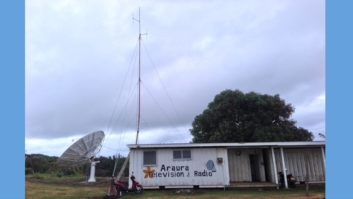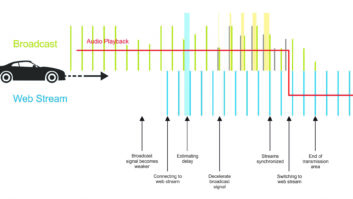The author is managing director for RFmondial
HANNOVER, Germany — Digital radio transmissions can be used as an efficient and cost effective solution for providing data services to single users, specific regions or vast areas. In this context, the DRM system can be seen as a point-to-multipoint digital data channel, called DRM datacasting.

There are several reasons why DRM broadcasting can be the technology of choice. These include:
COSTS
DRM broadcasting can simply be cheaper than a dedicated satellite link: A BGAN 64 kbps stream with a net data rate of approximately 40 kbps results in costs of about US$5 per minute per reception. DRM shortwave with a guaranteed bitrate of 40 kbps costs approximately $5 per minute as well; however, the signal can be received by all receivers within the service area and increases the profitability the more receivers are involved, e.g. for naval fleets.
SERVICE AREA
As satellite data services are rarely available at high latitudes, DRM transmission can be the only service, which can provide data links to these areas.
Furthermore, in many cases where no satellite antennas can be installed due to technical or esthetic reasons on the reception site (e.g. sailing boats), shortwave antennas are already present.
INFRASTRUCTURE MODEL
DRM transmitter infrastructure can be self-operated from a friendly location. Nevertheless, any area worldwide can be reached from such a station, without being dependent on a third-party infrastructure operator (e.g. satellite, mobile).
Furthermore, many existing analog transmitters can efficiently be upgraded to digital transmission, enabling the opportunity to create new markets.
In the following several applications of datacasting, the technical solution as well as various experiences from the field are described.
DATACASTING APPLICATIONS
The main advantage of DRM datacasting lies in its exploitation of the inherent broadcasting concept, i.e. providing data that serve many customers. In the maritime context, nautical and weather data, safety information, but also general data like training material or infotainment can be transmitted.
For maritime and landline applications, the provision of differential GNSS information is necessary for high-precision localization information. Farming, marine navigation, offshore construction, autonomous driving and others can benefit from receiving the differential information via DRM. Further examples for datacasting are digital signage as well as energy load management and street lighting control. A direct integration of DRM with relevant standards (e.g. ECDIS, GRIB, AIS, RTCM) has been proven to be applicable. Of course, audio can always be transmitted in parallel to the data channels.
TECHNICAL SOLUTION
As DRM has been developed with such applications in mind, the technical implementation is straightforward. The desired data can either be integrated in one of the existing data services like Journaline or Slideshow or be sent via a transparent IP-channel. If desired, the transmission can be encrypted including a conditional access for single users and groups. DRM furthermore provides a fully integrated disaster and early warning service called Emergency Warning Functionality (EWF).
After receiving and decoding the DRM signal, the data are available via standard interfaces (e.g. Wi-Fi, LAN, serial) and can be connected to the respective application. Fig. 1 shows a typical setup for providing nautical data to a fleet of ships.

DRM DATACASTING IN THE FIELD
Various applications have already been implemented, others are under investigation. Some examples are listed in the following, technically supported by Media Broadcast, Fraunhofer, and RFmondial:
- Crew infotainment on several frigates of the German Navy as well as on a cruise ship passing the Northwest Passage and a cargo vessel from Hamburg (Germany) to Shanghai (China)
- Data transmission with the German Navy for submarines
- Differential GPS on DRM long- and shortwave in Germany for farming and autonomous driving
A trial project is being conducted by the United States Coast Guard (USCG), investigating the Next Generation Arctic Navigational Safety Information System (ANSIS) using existing infrastructure transmitting to the Northwest Passage.
A wide range of information is broadcast such as detailed weather maps (e.g. current, surface, wind), ice maps (e.g. daily sea ice stage), NAVTEX, Marine Safety Information (MSI) Bulletins, NOAA data buoy, and Automated Identification System (AIS), Application Specific Messages (ASM), virtual aids to navigation, along with the latest news and sports.
The received data is both integrated into the vessel’s Electronic Chart System (ECS) and provided in a browser-based application. The participants are excited to read the latest news and weather forecast on their cell phones without having to utilize expensive satellite links. If successful, the USCG will investigate bringing the system in operation.

CONCLUSION
DRM datacasting is a powerful option for providing cost-effective data services for a variety of special applications, which benefit from the point-to-multipoint capability of modern digital long-, medium- and shortwave transmissions.








